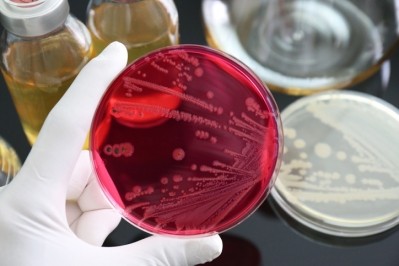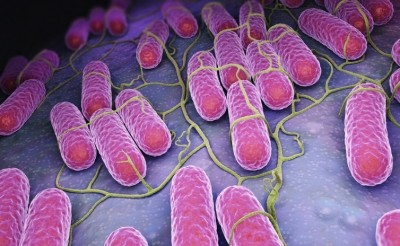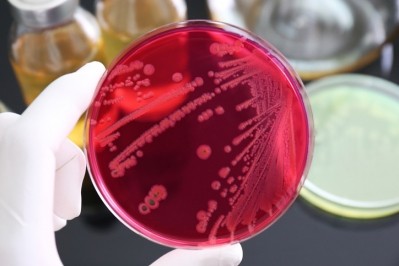Reports from IPPE
Testing feed samples for the presence of salmonella

We sat down with Louise Calderwood, director of regulatory affairs, and Paul Davis, director of quality, animal food safety and education, both with the American Feed Industry Association (AFIA), during IPPE in Atlanta to get an update on the association’s salmonella research project.
The AFIA salmonella research project started in 2017 with the goal of collecting and testing feed samples for the presence of salmonella and to check what strains or serotypes of the bacteria were present.
There are more than 2,500 serotypes of salmonella, said Calderwood. Analyzing salmonella-positive feed samples to identify the specific serotype present is of interest because only eight serotypes are considered a concern in animal feed.
The data is being generated to provide more information to feed producers to use while performing facility hazard analyses in compliance with the Food Safety Modernization Act (FSMA) requirements, said Davis.
“We want to proactively add to that body of knowledge to evaluate and determine whether salmonella in livestock feed is a known and reasonably foreseeable hazard. We hold strong that it is not, and that’s what we’re hoping to further demonstrate – we do not expect to find any of the eight serotypes of interest.”
AFIA’s charitable organization – the Institute for Feed Education and Research (IFEEDER) – collaborated with several organizations including AFIA, the National Pork Board, National Renderers Association, the Poultry Protein and Fat Council, US Poultry and Egg Association and the US Soybean Board on the research project.
The feed analysis project is checking samples of feeds generated for a range of species, said Calderwood.
“We’ve got alligator feed samples, we have game birds, a lot of poultry, every type of poultry, a good smattering of dairy, pork, beef, a few sheep, goats [and] a few horses."
“We have a good representation of the geography of the mills that have participated and a good geography of where feed is milled in the country,” she said. “We have covered the entire country."
FSMA, hazard analysis and salmonella
Previous work done looking at the presence of salmonella in livestock feed was completed decades ago and needs to be updated, said Davis. “We’re trying to be proactive,” he added.
Historical data showed that about 4% of feed examined tested positive for salmonella, said Calderwood. “It looks like the results, at this point, indicate that they’re going to be comparable,” she added.
It was expected that some of the feed samples would be positive for salmonella, she said. “With 2,500 different serotypes, that’s not a surprise,” she added.
However, the anticipation is that none will have one of the eight serotypes of concern, said Davis.
“One of our goals is a safe feed and safe food supply,” he said. “Almost all firms are beginning to have to come into compliance with the hazard analysis preventive controls portion of the [FSMA] rule.”
The hazard analysis requires a facility to assess the species for which they generate feed, the ingredients and processes used along with facility history and to hone a large potential set of hazards down to “the known and reasonably foreseeable hazards,” he said. “Louise mentioned salmonella being almost ubiquitous, but there are very few serotypes of interest to livestock.”
“So this proactive step was to analyze, evaluate, gather the data that can be used to further validate the conclusion that says, ‘This is not a known and reasonably foreseeable hazard at my facility,’” he added. “This will bolster, or demonstrate or help prove that to an investigator or inspector.”
Salmonella sampling process and analysis
The ongoing study is collecting two sets of three feed samples from 104 production facilities across the US, said Calderwood. The batches of feed samples are being gathered during different seasons.
“If we’re able to collect sufficient data at sufficient time points, we’d like to analyze to see if there is a seasonal variation in salmonella serotypes,” she added.
All the samples will be sent to the University of Arkansas where they are tested for the “presence or absence of salmonella,” she said.
Samples that are found to have salmonella are submitted to Iowa State University to determine which serotype of the bacteria is present.
The initial set of samples were collected in October and November, she said.
Equipment needed to collect the second set of samples is set to be disseminated to feed producers at the end of March or start of April, with the intention of seeing feed samples submitted during the summer.
Feed producers are given a kit including sterile bags, feed scoops and gloves to collect the samples along with three postcards, which are returned to AFIA, she added.
“The samples themselves go to the University of Arkansas and all that shows up at the University of Arkansas are sample numbers, all that shows up to us are sample numbers that tell us the type of feed and how it was manufactured,” said Calderwood. “There is no way to connect the results back to the mill.”
The initial analysis of the first set of samples has been completed and those testing positive for salmonella sent to Iowa State, she said. Preliminary testing on all samples is set to be completed by the end of the summer although the serotype analysis is expected to take additional time.














